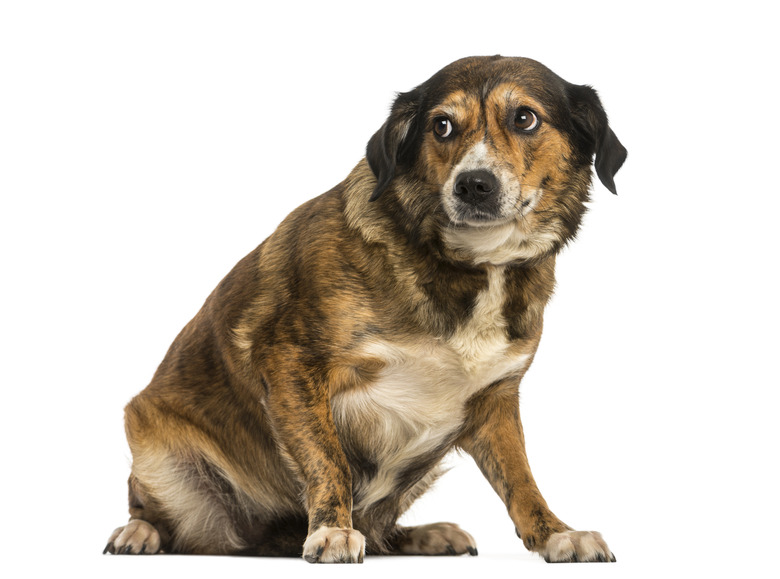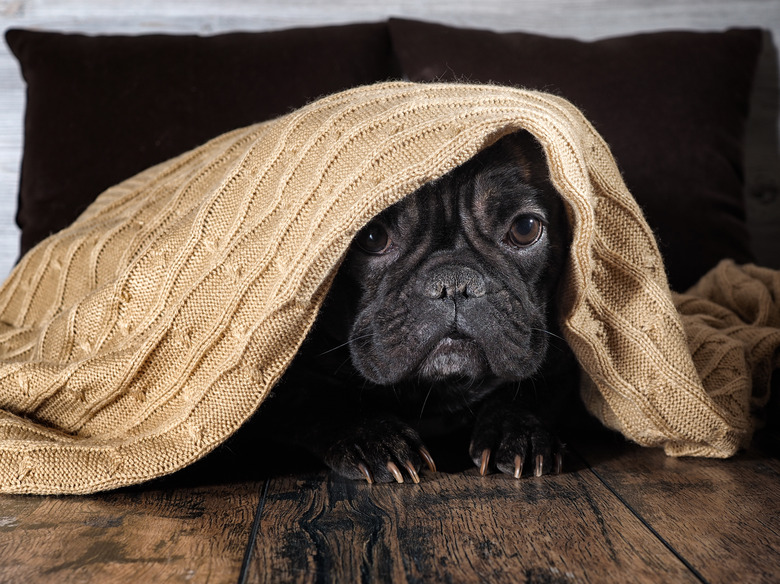Why Is My Dog Scared Of Everything?
During the spooky Halloween season, we all feel a little bit jumpier. However, if your dog reacts in terror to the world like he or she is celebrating Halloween all year round, then life can get a little frustrating.
We love our dogs, and none of us want to see them cower in fear at the slightest little thing, but some dogs just seem fearful to their core. We dug into what causes our dogs to seem afraid of everything and what we can do to help calm them down and feel more confident and less afraid.
Why does it seem like my dog is scared of everything?
Why does it seem like my dog is scared of everything?
One of the most common reasons behind persistent, all-encompassing fear is that your dog wasn't properly socialized as a puppy. Your dog's early months are the best opportunity to introduce them to as much as you can – other dogs, scary sounds, different sizes of humans, household appliances, the car, new places, etc. And if your dog missed out on this time, they may have developed more fears than normal.
Another reason your dog may seem fearful is a lack of self-confidence. Maybe your dog doesn't comfortable and confident in general, so that makes them quick to respond in fear and nervousness.
Specific trauma may also have influenced your dog's reaction to certain situations. You may need to work through whatever trauma inspired your dog's fear to help it get passed an overall fearfulness.
What does fear look like in a dog?
What does fear look like in a dog?
The first step to understanding your dog's fear is to be able to identify a fearful dog. Here are some clear canine signals that your pup's feeling terrified.
- Crouched body position. Just like we do, dogs often cower when they feel fearful.
- Flat ears and tail. Dogs' tails and ears express their emotions, and that flat look communicates their unease.
- Whimpering. If your pup whines or whimpers, that's a clear indicator that they're not feeling comfortable.
- Destructive behavior. Sometimes dogs lash out when they feel uncomfortable by destroying things or snipping at people.
What are common canine fears?
What are common canine fears?
While every dog is unique, there are some pup fears that are very common.
- Many dogs dislike loud noises. Fireworks and thunderstorms can send even the bravest dog running and hiding.
- Riding in a car. Whether it's the unusual sensation of motion or the fact that the car usually leads to the vet, some dogs really get nervous in the car.
- Hats, sunglasses, or beards. When humans add too many things onto their body that changes their shape, it can unsettle our pup.
If you have a puppy, take note of these unusual fears and do your best to socialize your pup to all of these different common fears. When you introduce things as a puppy, your dog will likely learn not to react with so much fear.
How can I make my dog less fearful?
How can I make my dog less fearful?
When your dog is reacting in fear to something, your instinct is probably to comfort your pup. However, petting your dog while they are reacting in fear might reinforce the fear, rather than reduce their fear.
Instead of reinforcing the fear, a better approach is to distract them and then reward them. If you teach your pup obedience, then try pulling out your pup's favorite reward and having it perform some simple tricks for a treat. Or pull out a favorite toy and play. With our dog, when we pull out the vacuum, we also pull out the treats to help teach her that vacuum means treats, rather than scary noise monster.
When you redirect your dog during scary situations, you show your dog that as the one in charge, you are not scared. You're also teaching them to feel focused and relaxed in the face of fearful moments, rather than letting the fear take over. And in the end, you and your dog will feel more comfortable and confident.

